The 30 Best High Schools in the Central U.S: Ranking for Academic Excellence
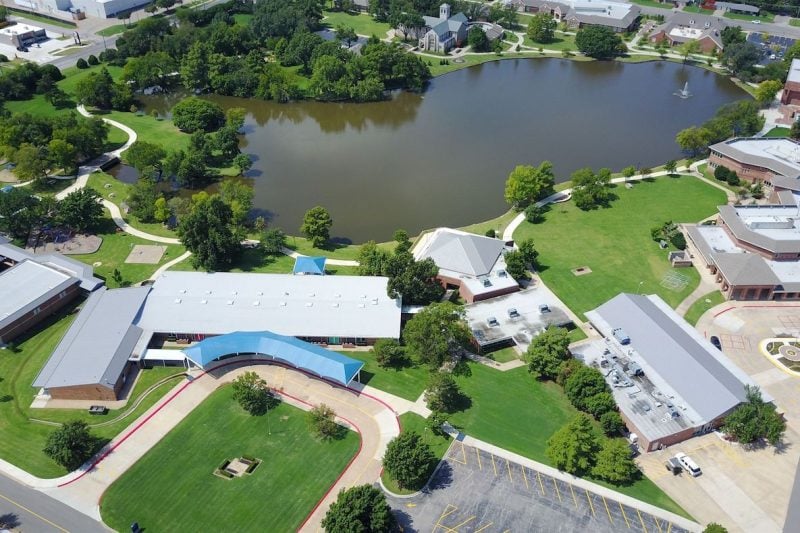
The central United States houses numerous high-performing educational institutions that consistently rank among the nation’s finest.
These schools span across states including Illinois, Missouri, Kansas, Oklahoma, Tennessee, North Dakota, South Dakota, and Nebraska, representing diverse communities from major metropolitan areas to smaller cities.
Identifying the top 30 high schools in this region provides families with comprehensive insight into educational excellence across America’s heartland.
The selected institutions demonstrate outstanding academic performance through various metrics including test scores, graduation rates, college preparation programs, and student outcomes.
Each school brings unique strengths while maintaining consistent standards of educational quality that prepare students for future success.
Here are the 30 best high schools in the Central U.S.
1. Casady School, Oklahoma City, OK
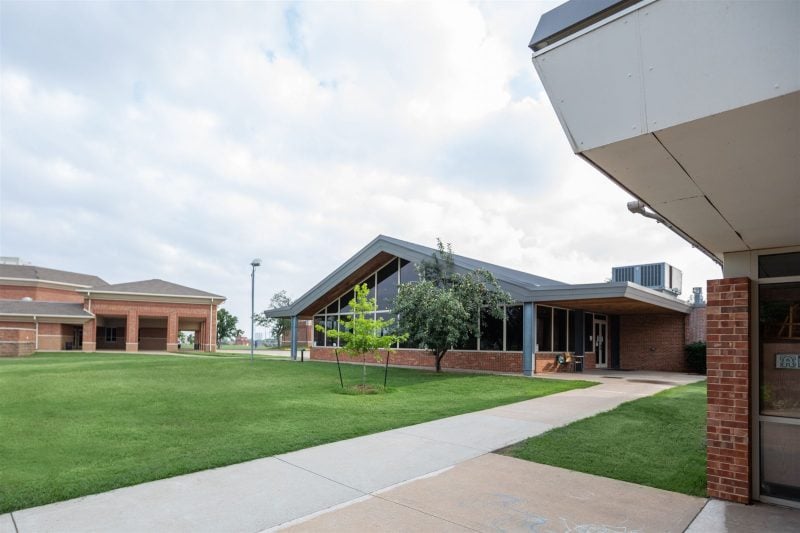
Casady School in Oklahoma City is a prestigious, independent Episcopal day school serving students from pre-kindergarten through grade 12.
It is widely regarded as one of the top private schools in Oklahoma, consistently ranked for academic rigor and college preparedness.
Casady sustains a low student-to-faculty ratio, around 8:1, allowing for personalized instruction across its 80-acre campus.
The student body is diverse, with a significant proportion of Asian, multiracial, and minority students, though the majority remain White.
Tuition levels are relatively high and admission is selective, with less than half of applicants accepted. Nearly 100 percent of graduates attend four-year colleges, many at competitive institutions, and a large share enroll in their top‐choice schools.
The school boasts strong facilities, robust arts and athletics programs, and a reputation for attracting families seeking a high-performance, values-based education in Oklahoma.
2. Central Magnet School, Tennessee
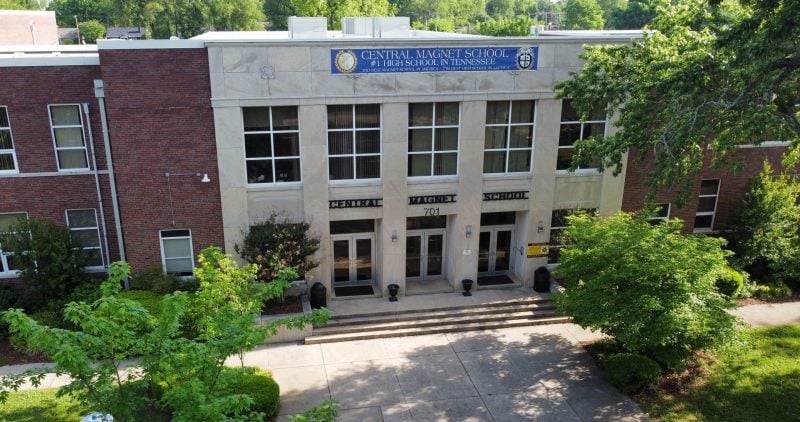
Central Magnet School in Murfreesboro ranks as the third-best high school in the United States according to U.S. News & World Report’s 2025-26 rankings. This achievement makes it the top-ranked high school in Tennessee.
The school maintains a 100 percent graduation rate. Students demonstrate exceptional academic performance with 94 percent proficiency in mathematics and 99 percent proficiency in reading.
Central Magnet School also earned recognition as the fourth-best magnet school nationally. The institution serves students in Rutherford County and follows a specialized curriculum designed to challenge high-achieving students.
The school’s consistent high performance across multiple ranking systems reflects its strong academic programs and student outcomes. Its position among America’s elite high schools demonstrates Tennessee’s capacity for educational excellence at the secondary level.
3. Smithville High School, Missouri
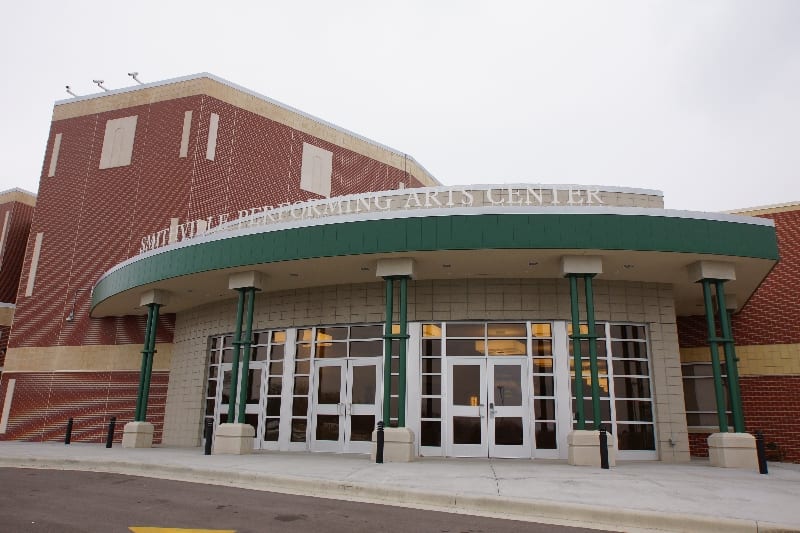
Smithville High School serves 884 students in grades 9-12 within the Smithville R-II school district. The school consistently ranks in the top 10% of Missouri high schools for overall academic performance.
The institution has maintained its position in the top 15% of state schools over the past three years. SchoolDigger awards Smithville High a 4-star rating, placing it among Missouri’s top-performing educational institutions.
Students demonstrate strong academic achievement across core subjects. Math proficiency ranks in the top 20% statewide, while reading proficiency also places in the top 20% among Missouri schools.
The school district supports students through programs like the Warrior Closet. This free resource provides essential school supplies, clothing, and hygiene items to families in need.
4. Blue Valley High School, Kansas
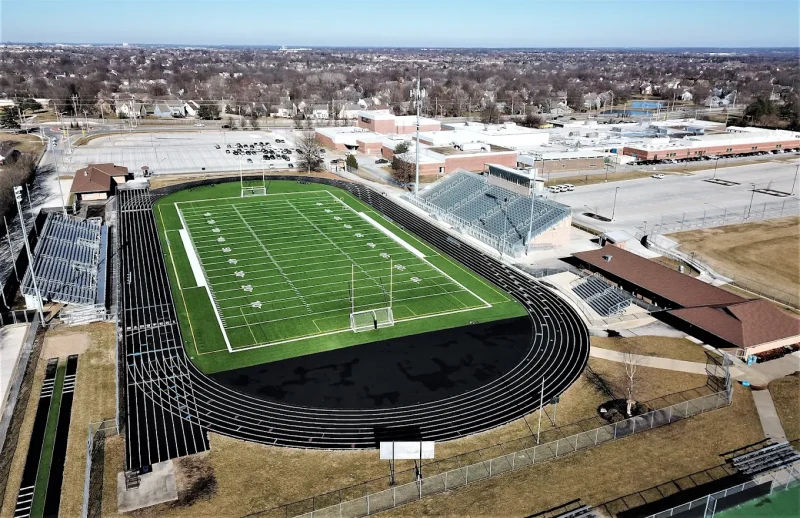
Blue Valley High School stands as one of Kansas’s premier educational institutions. Located in Stilwell, the school serves 1,405 students in grades 9-12.
The school consistently ranks within the top 20% of all public schools in Kansas. It has maintained a 4-star rating from SchoolDigger for three consecutive years.
U.S. News and World Report has recognized Blue Valley High School among the top 10 schools in Kansas. The publication also ranks it within the top 10% of high schools nationwide.
Blue Valley High School belongs to the Blue Valley school district, which has achieved remarkable success across all five of its high schools. The district is the only one in Kansas to have all its schools ranked in the state’s top 10.
The school’s academic performance and college readiness metrics contribute to its strong reputation throughout the Central United States.
5. St. Louis University High, Missouri
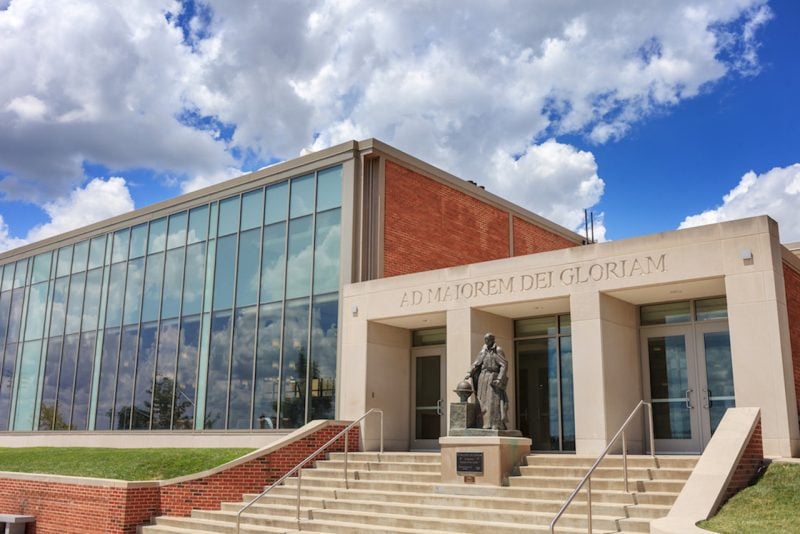
St. Louis University High School stands as one of Missouri’s most prestigious educational institutions. Founded in 1818, it holds the distinction of being the oldest secondary school west of the Mississippi River.
This Catholic all-boys Jesuit high school serves students throughout the St. Louis metropolitan area. The school maintains a strong academic reputation with rigorous college preparatory programs.
SLUH operates as one of the largest private high schools in Missouri. The institution focuses on developing young men through faith-based education and leadership development.
The school’s Jesuit tradition emphasizes academic excellence and character formation. Students benefit from small class sizes and dedicated faculty members who provide personalized attention.
The campus offers extensive extracurricular activities including athletics, arts, and service opportunities. These programs complement the strong academic curriculum and help students develop well-rounded skill sets.
6. Lawrence High School, Kansas
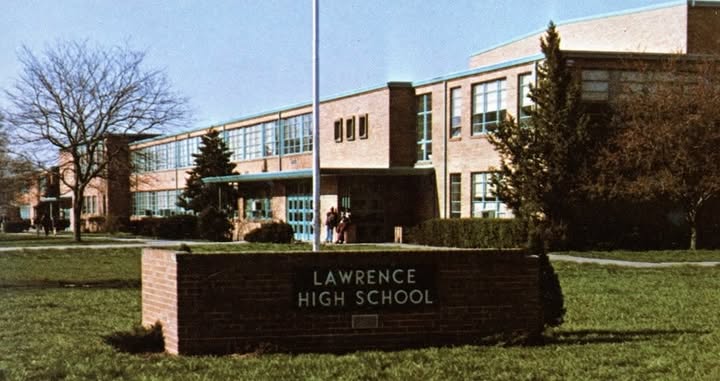
Lawrence High School serves students in grades 9-12 in Lawrence, Kansas. The school operates under the Lawrence USD 497 school district and enrolled 1,575 students during the 2020-2021 academic year.
The school is one of two public high schools located in Lawrence. It provides comprehensive secondary education to a diverse student population in the college town environment.
Lawrence High School offers standard high school coursework and extracurricular activities. The school serves the eastern portion of the Lawrence community while Lawrence Free State High School serves the western area.
The institution maintains its role as a key educational facility in Douglas County. Students from Lawrence High School continue their education at various colleges and universities or enter the workforce after graduation.
7. Rockhurst High School, Missouri
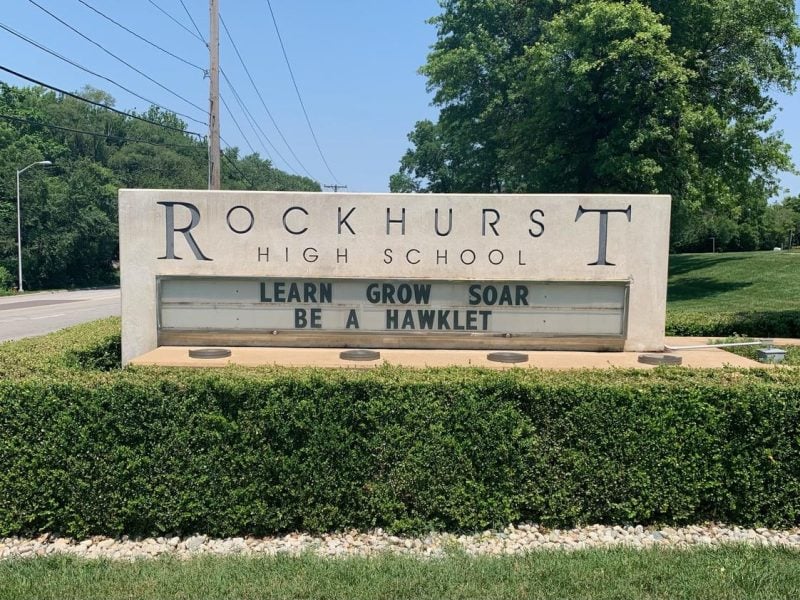
Rockhurst High School stands as a distinguished private institution in Kansas City, Missouri. The school serves 937 students and maintains a strong academic reputation throughout the region.
As part of the Jesuit Schools Network, Rockhurst upholds rigorous educational standards. The school is one of 60 Jesuit secondary schools across the United States and Central America.
The student body reflects diversity with 20.4% minority enrollment. Faculty members nominate graduating seniors for the prestigious JSN Award, recognizing students who best embody Jesuit ideals.
Rockhurst consistently ranks among Missouri’s top high schools based on test scores and academic performance. The institution provides comprehensive college preparation programs for its students.
The school’s Jesuit foundation emphasizes both intellectual development and character formation. Students benefit from small class sizes and dedicated faculty committed to educational excellence.
8. Prairie Ridge High School, Illinois
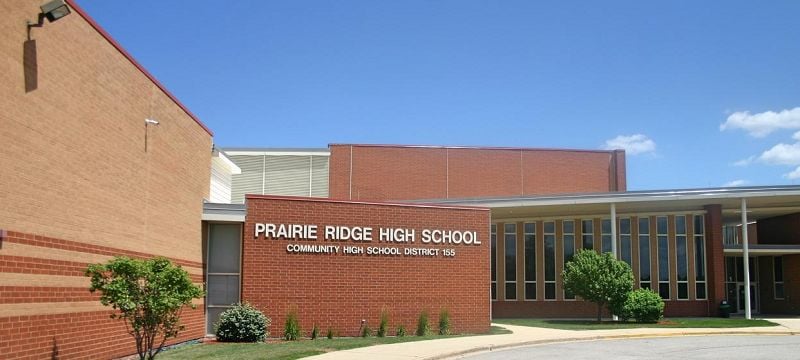
Prairie Ridge High School serves Crystal Lake, Illinois as part of Community High School District 155. The school opened in 1997 to address overcrowding at three area high schools.
Prairie Ridge consistently ranks among Illinois’s top public high schools. The school holds a position within the top 20% of public schools statewide and maintains a 4-star rating from SchoolDigger.
U.S. News & World Report recognizes Prairie Ridge among the nation’s best high schools. Newsweek designated it as a Top STEM High School, highlighting its science and technology programs.
The school serves approximately 1,180 students in grades 9-12. Prairie Ridge offers Advanced Placement courses and Project Lead The Way curriculum to prepare students for college and careers.
District 155 earned recognition as the best district in McHenry County according to Niche rankings. Prairie Ridge contributes to this district-wide excellence through its academic performance and student outcomes.
9. Naperville Central High School, Illinois
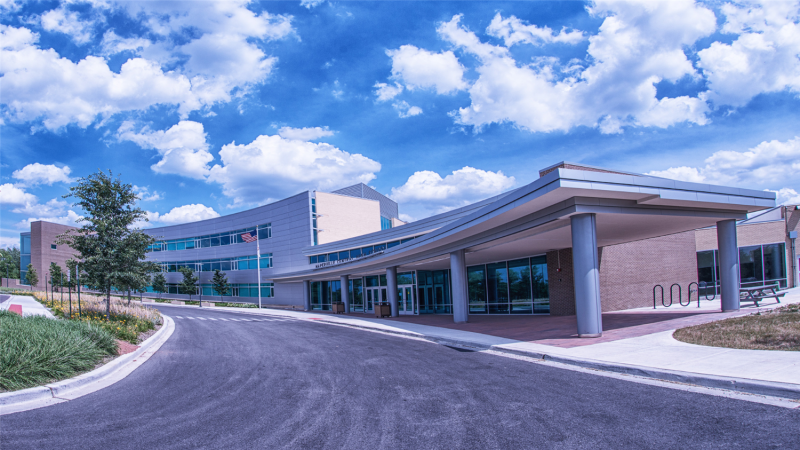
Naperville Central High School stands as one of Illinois’ premier educational institutions. The school consistently ranks among the top 25 high schools in the state.
Located at 440 Aurora Ave in Naperville, the school serves students in Naperville Community Unit School District 203. It reached as high as 10th place in Illinois rankings during the 2021-2022 school year.
Students perform exceptionally well on standardized tests, significantly outpacing state averages. The school offers Advanced Placement courses and Project Lead The Way curriculum programs.
Naperville Central provides various enrichment opportunities including blended and online courses. Students can pursue the State Seal of Biliteracy and Illinois Global Scholars Certificate.
The school earned a national ranking of 546th among nearly 18,000 public high schools nationwide. Its academic excellence and comprehensive programming make it a standout institution in the central United States.
10. Naperville North High School, Illinois
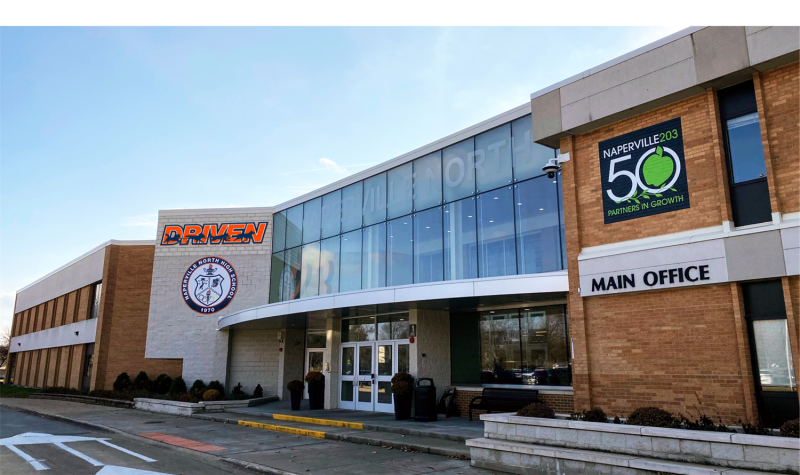
Naperville North High School stands among Illinois’ top-performing educational institutions. The school consistently ranks in the top 25 high schools statewide and maintains a 5-star rating from SchoolDigger.
Located in Naperville, the school operates within the Naperville CUSD 203 district. Students have access to a comprehensive weighted and college preparatory curriculum designed to prepare them for higher education.
The school offers diverse enrichment opportunities including blended and online courses. Students can pursue the State Seal of Biliteracy and the Illinois Global Scholars Certificate. Career Pathway Diploma Endorsements provide additional specialization options.
Naperville North earned recognition in U.S. News & World Report’s Best High Schools rankings. The school ranked 671st nationally among nearly 18,000 public high schools evaluated across the country.
The institution serves as a launching pad for students pursuing academic excellence and college preparation.
11. Downers Grove North High School, Illinois
Downers Grove North High School ranks among Illinois’s top public high schools. The school consistently places in the top 50 schools statewide out of nearly 700 institutions.
Part of Community High School District 99, the school serves students in grades 9-12. District 99 operates two high schools that both maintain strong academic reputations.
The school earned a 5-star rating from SchoolDigger and received an A+ overall grade from Niche. U.S. News & World Report has recognized it as one of America’s Best High Schools.
Downers Grove North was renamed in 1964 when the district opened Downers Grove South High School. The school has built a strong foundation through collaboration between students, teachers, parents, and the community.
The institution excels in academics while also earning recognition for athletic and extracurricular programs.
12. Naperville Central High School, Illinois
Naperville Central High School ranks within the top 5% of all public schools in Illinois. The school serves 2,519 students in grades 9-12 in Naperville, a western Chicago suburb.
The institution operates as part of Naperville Community Unit School District 203. It functions as one of two high schools serving the Naperville area.
Naperville Central offers Advanced Placement courses and Project Lead The Way curriculum. These programs provide students with rigorous academic opportunities and career-focused pathways.
The school consistently appears in state rankings among Illinois’s top 50 high schools. U.S. News & World Report regularly includes Naperville Central in its annual Best High Schools listings.
Three Naperville-area high schools, including Central, frequently earn recognition for educational excellence. This regional concentration of high-performing schools reflects the area’s commitment to quality education.
13. Kirkwood High School, Missouri
Kirkwood High School stands as one of Missouri’s premier educational institutions. The school serves approximately 1,700 students in grades 9-12 within the Kirkwood R-7 School District.
The institution maintains a favorable student-to-teacher ratio of 15:1. This ratio supports personalized attention and academic engagement for students.
Kirkwood High School consistently ranks among the top high schools in Missouri. U.S. News & World Report ranked it as the fifth best high school in the state during their 2023-24 rankings.
Academic performance exceeds state averages in several key subjects. Students demonstrate strong proficiency rates in English II, Biology I, and Government courses.
The school ranks in the top 30% of all Missouri schools for overall test scores. Reading proficiency scores particularly contribute to this strong academic standing.
Located in Kirkwood, Missouri, the school has established a reputation for academic excellence throughout the region.
14. Lee’s Summit High School, Missouri
Lee’s Summit High School stands as one of three high schools in the Lee’s Summit R-VII School District. The school is strategically located near downtown Lee’s Summit on Blue Parkway.
The campus sits at the intersection of U.S. Route 50 and Route 291. This central location provides easy access for students throughout the area.
The school has earned recognition for its academic performance. It ranks in the top 20% of high schools for the 2025-26 school year according to recent evaluations.
Lee’s Summit High School serves students in a district known for educational excellence. The Lee’s Summit R-VII district operates 30 schools total, including five high schools.
The institution maintains strong academic standards and test scores. Students benefit from the district’s commitment to college readiness and graduation success.
15. Columbia High School, Missouri
Columbia Public Schools operates several highly-rated high schools that serve the central Missouri region. Rock Bridge High School stands as one of the district’s flagship institutions, founded in 1973 and serving approximately 2,000 students in grades 9-12.
The school has established itself as a premier educational institution within Missouri. Students benefit from comprehensive academic programs designed to prepare them for college and career success.
David H. Hickman High School represents another strong option within the Columbia district. Both schools consistently rank among the top public high schools in the state based on test scores and graduation rates.
Columbia’s high schools operate within a district known for its commitment to educational excellence. The schools provide students with quality instruction and extensive resources to support academic achievement.
These institutions serve as examples of strong public education in Missouri’s central region.
16. Fort Zumwalt South High School, Missouri
Fort Zumwalt South High School serves 1,245 students in grades 9-12 in Saint Peters, Missouri. The school ranks within the top 5% of all public schools in Missouri.
Founded in 1987, Fort Zumwalt South was the second high school established in the Fort Zumwalt School District. It operates as part of the Ft. Zumwalt R-II School District.
The school has earned recognition among America’s Best High Schools by US News & World Report for eight consecutive years. All four Fort Zumwalt district high schools rank in the top 12% of high schools nationally.
Fort Zumwalt South offers Advanced Placement courses and Project Lead The Way curriculum. The school maintains a 5-star rating from SchoolDigger.
The district’s high schools consistently rank among the top 10% of Missouri’s 359 high schools. This performance demonstrates the district’s commitment to academic excellence across all campuses.
17. Blue Springs South High School, Missouri
Blue Springs South High School serves 2,308 students in grades 9-12 in Blue Springs, Missouri. The school maintains a student-teacher ratio of 19 to 1.
The school ranks within the top 20% of all public schools in Missouri. It consistently places among the state’s top high schools, with rankings between 31st and 78th over the past decade.
Blue Springs South is part of the Blue Springs R-IV School District, which ranks 26th out of 386 districts statewide. The district holds a 5-star rating from SchoolDigger.
Academic performance shows 46% of students are proficient in math and 59% in reading based on state test scores. The school offers Advanced Placement courses and Project Lead The Way curriculum.
Students can participate in a Gifted & Talented program. Blue Springs South is one of five high schools within the Blue Springs R-IV School District.
18. O’Fallon Township High School, Illinois
O’Fallon Township High School serves 2,559 students in grades 9-12 and ranks within the top 30% of all public schools in Illinois. The school is the second largest public high school in Illinois by enrollment outside of the Chicago area.
Students consistently outperform state averages in SAT Math and English Language Arts proficiency. They also excel on the Illinois Science Assessment, demonstrating strong academic performance across core subjects.
The school maintains a 91.4% four-year graduation rate, significantly higher than the state average. This achievement reflects the institution’s commitment to student success and retention.
O’Fallon Township High School consistently places in the top 15% of Illinois schools in statewide rankings. The district operates as a 5-star school district, ranked #96 in Illinois.
Located in O’Fallon, Illinois, the school’s mission focuses on maximizing student potential through community and family engagement. The institution emphasizes creating informed decision makers and lifelong learners.
19. Wheaton Warrenville South High School, Illinois
Wheaton Warrenville South High School operates as a public four-year institution in Wheaton, Illinois. The school serves as one of two high schools within Community Unit School District 200.
Students have access to Advanced Placement courses and a Gifted & Talented program. The academic offerings support diverse learning needs and college preparation goals.
The school consistently earns recognition for academic performance. Both Wheaton North and Wheaton Warrenville South received rankings among Illinois’s best high schools in U.S. News & World Report’s 2024 assessment.
SchoolDigger awarded the institution a 5-star rating and placed it among the top 70 Illinois high schools for three consecutive years. These rankings reflect strong academic outcomes and consistent performance standards.
The school’s address is 1993 Tiger Trail in Wheaton, with the phone number (630) 784-7200. Local residents commonly refer to the institution as “South” to distinguish it from the district’s other high school.
20. New Trier High School, Illinois
New Trier High School operates on two campuses in Northfield and Winnetka, serving Chicago’s North Shore suburbs. The school consistently ranks among Illinois’ top public high schools.
U.S. News & World Report recently ranked New Trier 13th in Illinois overall. When excluding selective enrollment schools, the publication placed it fourth among public high schools statewide.
The institution offers exceptional academic resources that are rarely found elsewhere in Illinois. Students have access to comprehensive programs designed to prepare them for competitive colleges.
New Trier’s location in the affluent North Shore region contributes to its strong educational reputation. The school serves as a cornerstone of the area’s commitment to academic excellence.
The dual-campus structure allows New Trier to accommodate a large student body while maintaining quality educational standards. This arrangement has become a defining characteristic of the school’s operations.
21. Antioch Community High School, Illinois
Antioch Community High School serves 1,286 students in grades 9-12 in Antioch, Illinois. The school operates as part of the CHSD 117 School District.
The high school ranks within the top 50% of all public schools in Illinois. It maintains a student-teacher ratio of 14.6 to 1, providing reasonable class sizes for instruction.
US News and World Report recognized Antioch Community High School as #147 among Illinois high schools in 2023. This ranking places the school in the top 20% statewide based on factors including AP exam participation, SAT performance, and student success metrics.
The school stands as the 177th largest public high school in Illinois. Among national public high schools, it ranks 4,573rd by enrollment size.
Antioch Community High School demonstrates solid academic performance within the competitive Illinois educational landscape.
22. Fargo North High School, North Dakota
North High School serves students in grades 9-12 in the northern portion of Fargo, North Dakota. The school operates within the Fargo 1 School District, which includes six high schools total.
The institution offers Advanced Placement courses to challenge academically motivated students. North High School also provides Project Lead The Way curriculum, which focuses on STEM education and engineering concepts.
Students can access both traditional classroom instruction and specialized programs. The school emphasizes college preparation through its rigorous academic offerings.
North High School consistently appears in state rankings for North Dakota public high schools. The institution serves a diverse student body across multiple grade levels.
The school maintains strong academic standards while offering extracurricular opportunities. Faculty members work to prepare students for post-secondary education and career success.
North High School represents one of Fargo’s established educational institutions with a focus on comprehensive student development.
23. Minot High School, North Dakota
Minot High School serves students in North Dakota’s fourth-largest city. The school is part of the Minot Public School District and maintains a strong academic reputation in the region.
The school’s mascot is a magician, reflecting Minot’s nickname as the “Magic City.” This name originated from the city’s rapid development in 1886 following the arrival of the Great Northern railroad.
Minot High School’s varsity teams compete in Class A athletics against the state’s largest high schools. For football specifically, they participate in Class AAA competition through the North Dakota High School Activities Association.
The school demonstrates solid performance metrics including graduation rates and college readiness indicators. Students benefit from comprehensive academic programs and extracurricular opportunities that prepare them for post-secondary education and career paths.
Minot High School represents the educational standards expected from North Dakota’s public school system.
24. Sioux Falls Washington High School, South Dakota
Washington High School serves as one of four public high schools in the Sioux Falls School District. The school maintains an enrollment of 1,910 students, making it a substantial educational institution in South Dakota.
The school emphasizes a cooperative approach between students, parents, and the community. This partnership focuses on promoting student autonomy, development, and personal growth throughout the educational experience.
Washington High School offers comprehensive academic and co-curricular programs designed to prepare students for their future endeavors. The school’s curriculum includes advanced coursework options that challenge students academically.
Located in Sioux Falls, the school benefits from being part of a city that houses multiple top-ranked educational institutions. The Sioux Falls area consistently produces high-performing schools that rank among South Dakota’s best.
The school’s commitment to educational excellence reflects the broader educational standards found throughout the Sioux Falls School District.
25. Lincoln Southeast High School, Nebraska
Lincoln Southeast High School serves 1,880 students in grades 9-12 in Lincoln, Nebraska. The school operates as part of the Lincoln Public Schools district and maintains a student-teacher ratio of 17 to 1.
The school ranks within the top 50% of all public schools in Nebraska. State test scores show 60% of students achieve proficiency in both mathematics and reading.
Lincoln Southeast offers Advanced Placement courses and maintains a Gifted & Talented program. The school provides two sports programs for student athletes.
The institution holds the highest accreditation from the Nebraska Department of Education. It maintains membership and accreditation through the North Central Association of Colleges and Secondary Schools.
Lincoln Southeast High School represents one of 15 high schools within the Lincoln Public Schools system. The school consistently appears among the top-ranked public high schools in Lincoln.
26. Omaha Central High School, Nebraska
Omaha Central High School stands as one of Nebraska’s most historic educational institutions. Originally known as Omaha High School, it serves students in downtown Omaha.
The school currently enrolls 4,674 students as of the 2024-2025 academic year. This makes it one of the largest high schools in the Omaha metropolitan area.
Central High School operates as a fully accredited public school within the Omaha Public Schools district. The institution emphasizes academic achievement and responsible global citizenship.
The school’s mission focuses on continuing its tradition of excellence. It promotes pride in diversity and enduring scholarship among its student body.
Students benefit from extensive extracurricular opportunities and various sports programs. The teaching staff demonstrates commitment to student success and academic growth.
The historic building provides a unique educational environment compared to other area high schools. Its rich history contributes to the distinctive character of the institution.
27. Topeka High School, Kansas
Topeka High School stands as a historic institution in Kansas’s capital city. The school maintains a strong emphasis on both academics and the arts.
The school offers International Baccalaureate (IB) programs, providing students with rigorous college-preparatory coursework. This program gives students access to advanced academic opportunities.
Topeka High School serves students in grades 9-12 within the Topeka public school district. The institution has built a reputation for balancing traditional academic excellence with creative programs.
The school’s arts programs complement its academic offerings. Students can participate in various creative disciplines alongside their core coursework.
Located in Topeka, the school benefits from being in the state capital. This location provides students with unique civic engagement and internship opportunities.
The combination of IB programming and arts emphasis sets Topeka High School apart from other schools in the region.
28. Manhattan High School, Kansas
Manhattan High School serves students in grades 9-12 in Manhattan, Kansas. The school operates within the Manhattan-Ogden USD 383 school district.
The institution maintains consistent academic performance with a 4-star rating from SchoolDigger. It ranks in the top 18% of Kansas high schools for three consecutive school years.
Current enrollment stands at approximately 1,954 students. This size allows the school to offer diverse academic programs while maintaining manageable class sizes.
The school demonstrates strong college readiness metrics. Students benefit from comprehensive curriculum options that prepare them for post-secondary education.
Manhattan High School’s location in the Manhattan metro area provides students access to educational resources and opportunities. The school’s sustained high rankings reflect its commitment to academic excellence and student achievement across multiple performance measures.
29. Shawnee Mission East High School, Kansas
Shawnee Mission East High School stands as the premier educational institution in the Shawnee Mission Public School district. The school serves 1,671 students in grades 9-12 from its Prairie Village location.
The school ranks within the top 20% of all public high schools in Kansas. In 2022, U.S. News and World Report placed Shawnee Mission East at number three among Kansas high schools.
Students have access to Advanced Placement courses and the International Baccalaureate program. The school also offers Project Lead The Way curriculum for students interested in STEM fields.
Shawnee Mission East consistently outperforms other schools in the district across various academic metrics. The institution maintains strong graduation rates and college readiness indicators that contribute to its statewide recognition.
30. Tulsa Union High School, Oklahoma
Union High School serves 3,516 students in grades 10-12 in Tulsa, Oklahoma. The school ranks within the top 50% of all public schools in Oklahoma.
Students at Union High School take the Oklahoma School Testing Program College-and-Career-Readiness Assessments. These standardized tests help measure academic performance across the state.
The school operates within the Union Public Schools district. This district has shown recent movement in state rankings, though performance varies compared to other Oklahoma districts.
Union High School provides educational services to a large student population. The school focuses on preparing students for post-secondary education and career readiness through its academic programs.
The institution represents one of the larger high schools in the Tulsa metropolitan area. Students have access to various academic opportunities designed to support their educational goals.
Criteria for Evaluating High Schools
Rankings of top high schools rely on standardized test performance, graduation rates, and college enrollment data. Student support services and mental health resources play equally important roles in determining school quality.
Academic Performance Metrics
State assessment scores in reading and mathematics form the foundation of most high school rankings. These standardized tests measure how well students perform compared to state and national benchmarks.
Key Academic Indicators:
- State test proficiency rates – Percentage of students meeting or exceeding grade-level standards
- AP exam participation and pass rates – Students scoring 3 or higher on Advanced Placement tests
- Graduation rates – Four-year cohort graduation percentages
- Grade distribution – Average GPA and course rigor statistics
Rankings also examine performance gaps between different student populations. Schools receive higher scores when historically underserved students achieve at similar levels to their peers.
Math and reading proficiency rates typically carry the most weight in evaluation systems. Schools with 90% or higher proficiency rates consistently rank in top tiers.
Student Support and Well-Being
Counseling services and mental health support directly impact student success and retention. Schools with lower student-to-counselor ratios often demonstrate better academic outcomes.
Extracurricular participation rates indicate student engagement levels. Schools offering diverse activities see higher graduation rates and college enrollment.
Support Services Measured:
- Student-to-counselor ratios (ideal 250:1 or better)
- Mental health program availability
- Tutoring and academic intervention services
- Special education resource allocation
Disciplinary policies and suspension rates reflect school climate quality. Schools with restorative justice programs typically show improved student behavior metrics.
Teacher retention and experience levels correlate with student achievement. Schools maintaining stable teaching staff create more consistent learning environments.
College Readiness Indicators
College enrollment rates within two years of graduation demonstrate institutional effectiveness. Top-ranked schools typically see 85-95% of graduates pursue higher education.
College Preparation Metrics:
- Dual enrollment participation – Students earning college credit during high school
- SAT/ACT average scores – Standardized college admission test performance
- College application completion rates – Students applying to four-year institutions
- Scholarship award amounts – Merit-based financial aid received
Advanced coursework availability affects college readiness significantly. Schools offering International Baccalaureate or extensive AP programs prepare students for rigorous college academics.
Career and technical education pathways provide alternatives to traditional college preparation. Schools balancing both academic tracks serve diverse student populations effectively.
Financial aid application completion rates indicate how well schools prepare families for college costs. Schools with dedicated college counselors achieve higher FAFSA completion percentages.
Regional Education Trends in the Central United States
Central states face distinct challenges in balancing educational resources between metropolitan areas and rural communities, while simultaneously working to create more inclusive learning environments that reflect their changing demographics.
Urban Versus Rural School Resources
Metropolitan districts in cities like Chicago, Minneapolis, and Kansas City typically receive higher per-pupil funding through property taxes and state allocations. These schools often feature advanced STEM laboratories, extensive extracurricular programs, and specialized college preparation courses.
Urban schools benefit from partnerships with nearby universities and corporations. Students access internship opportunities, dual enrollment programs, and guest speakers from diverse professional fields.
Rural districts across Iowa, Nebraska, and Missouri face different resource constraints. Lower property tax bases and declining enrollment numbers limit funding for specialized programs and technology upgrades.
Many rural schools consolidate to maintain viability. This creates longer bus routes but allows districts to pool resources for advanced placement courses and updated facilities.
Technology gaps remain pronounced between urban and rural areas. High-speed internet access affects distance learning capabilities and digital curriculum implementation across the region.
Diversity and Inclusion Initiatives
Demographic shifts in central states have prompted schools to develop culturally responsive teaching practices. Growing Latino populations in Kansas and Nebraska require expanded English language learning programs.
Districts implement bias training for educators and administrators. These programs address achievement gaps and ensure equitable discipline policies across different student populations.
Inclusive curriculum changes incorporate diverse perspectives in literature, history, and social studies courses. Schools add multicultural celebrations and awareness programs throughout the academic year.
Special education services receive increased attention as districts work to provide appropriate accommodations. Rural areas particularly struggle to recruit specialized staff for students with disabilities.
Community partnerships help schools address cultural barriers. Parent engagement programs now offer translation services and culturally relevant communication strategies.





